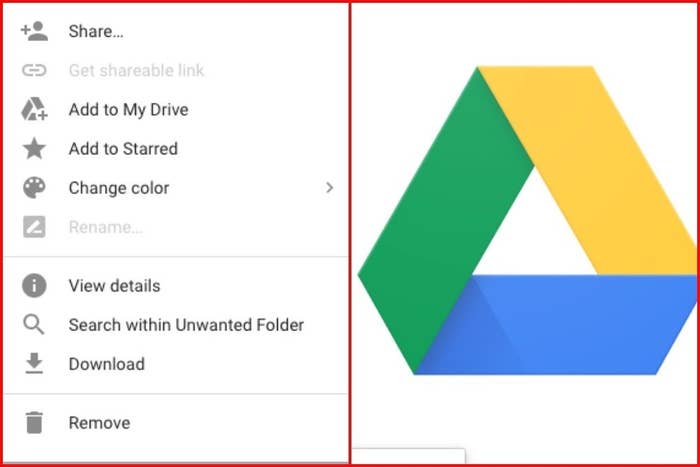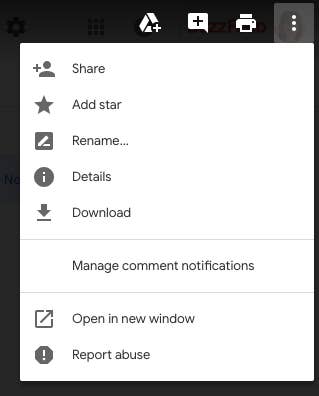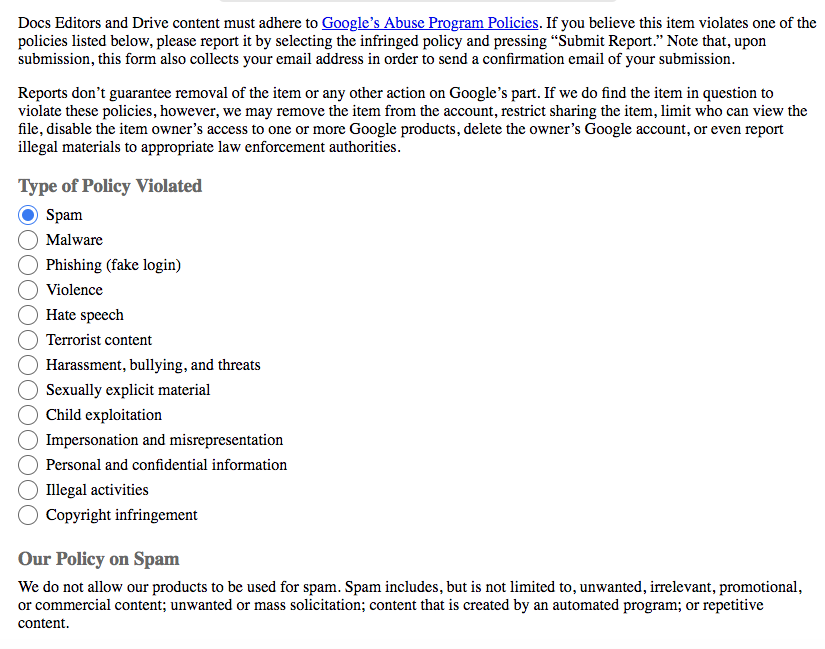
Google Drive isn’t a part of the web where you’d expect to be vulnerable to harassment, but due to a quirk in the way shared files and folders remain in your account — even after you’ve removed them — it offers harassers a way to digitally seek out victims. This is because Google doesn’t offer a way to block someone from sharing content with you over Drive.
Recently, Jessica (who asked to omit her last name for privacy reasons) was searching in her Google Drive for a list of addresses to send Christmas cards to. When she searched “Christmas,” a folder of photos created by an abusive ex-partner popped up. The photos were innocuous, and she suspects the ex didn’t even know she could still see the files, but she wanted absolutely no contact with that person. When Jessica tried to remove the folder from her drive, she couldn’t fully do it. “I felt ... really sick and helpless when I couldn’t remove myself from it,” she told BuzzFeed News.
“For the vast majority of users, the default sharing permissions in Drive work as intended. Unfortunately, this was not the case for this user and we sincerely apologize for her experience,” a Google representative told BuzzFeed News. “In light of this issue, we are evaluating changes to specific sharing permissions that will prevent this kind of activity from taking place on Drive.”

There are two ways folders or files can reappear in your Drive even if you’ve removed yourself from sharing:
1. When you go in the “Shared with me” tab of Drive, you can right-click on a file or folder and hit “Remove.” But if you hit “back” on your browser afterward, the folder reappears in your shared drive. This is meant to give users a way to undo accidental deletions and is not a bug, according to Google.
2. If you search in Drive for a term associated with file or folder someone has shared with you, it will show up in your search results, even if you’ve removed it. If you click on it from there, you’ll be added back to it. The idea is that people might be shared on a file, remove themselves, but later on decide they were interested in the file again and want access.
It’s unclear how many people have experienced harassment or encountered unwanted content via Google Drive, although Jessica isn’t alone. She told BuzzFeed News that other people had reached out to her to say they had experienced similar issues after she tweeted about it. On help forums for Google Drive and its products, there are questions going back years from users who want to, but can’t, block someone from sharing unwanted content. “Other than telling the person to stop sharing files with me (which I have done numerous times but they don’t get it) how can I block people from sharing files and folders with me?” asked a man in 2016. In reply to a similar concern, a Google community specialist suggested you could ask the file owner to revoke your access to an unwanted file — but that’s not a great option if you want zero contact with the file owner.
Google told BuzzFeed News it is taking Jessica’s concerns seriously and is considering a few possible changes to how sharing permissions work on Drive. For example, one option would be to add a “mark as spam” option instead of just “report as abuse,” since certain unwanted content isn’t actually harmful content (let’s say an ex shared an old photo — the photo itself might be normal, but the act of sharing in context is unwanted).
Thoughts about that Google Drive bug: 1) Anything with user-to-user interaction is a vector for harassment. Design accordingly. 2) If the only way to get these bugs fixed is a viral tweet, the harassment victim is inviting more harassment to fix your original mistake.
Blocking Isn’t Possible
Central to the problem is that Google allows you to report individual files for abuse, such as spam, threats, or revenge porn, but not a whole folder. (Google told BuzzFeed News that it’s working on adding a function to report folders.) And while you can report a person, you can’t block them — which means that if Google’s moderators decide the file being shared doesn’t constitute harassment or abuse, anyone can still share content with you.

Google Drive isn’t a social network in the same way as Twitter or Facebook, but it is a tool for people to share content and contact others easily. That means it can be a tool for harassment or stalking. Not having the same kinds of safeguards against harassment that traditional social networks have (like blocking, muting, permanent removal of things) is a huge blind spot.
Google isn’t alone in having oversights when it comes to policing harassment on its platforms — Spotify currently doesn’t allow users to block each other, and BuzzFeed News reported that many people have been complaining of stalkers using that access for abuse. Even for networks like Twitter, Facebook, and Instagram, which have faced scrutiny about harassment problems for years and have rolled out tools and new policies to address abuse, it’s a constant challenge. For something like Google Drive, which isn’t quite a social network, anticipating the kinds of features that keep users safe from harassment is clearly taking a little longer.
